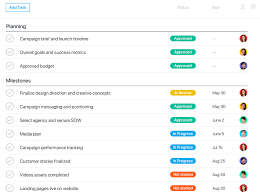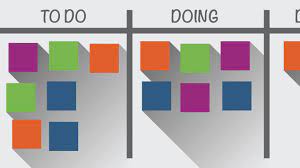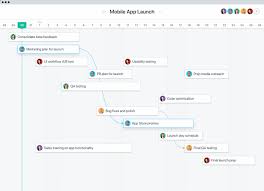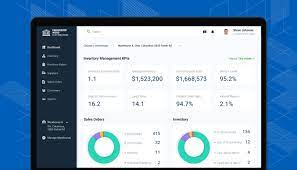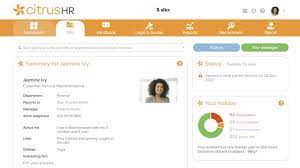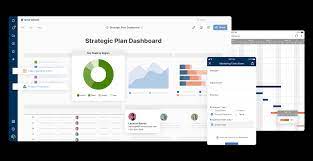Maximising Efficiency with Advanced Workflow Software
The Power of Workflow Software
In today’s fast-paced and dynamic business environment, efficiency and productivity are key factors in determining the success of an organisation. One tool that has revolutionised the way businesses operate is workflow software.
Workflow software is a technology solution that enables organisations to streamline their processes, automate tasks, and improve collaboration among team members. By defining a set of rules and sequences for the completion of tasks, workflow software ensures that work is carried out efficiently and consistently.
Benefits of Workflow Software:
- Increased Efficiency: By automating repetitive tasks and standardising processes, workflow software reduces manual errors and accelerates task completion.
- Improved Collaboration: Team members can easily track the progress of tasks, assign responsibilities, and communicate within the system, fostering better teamwork.
- Enhanced Visibility: Managers gain real-time insights into the status of projects, allowing for better decision-making and resource allocation.
- Compliance and Accountability: Workflow software ensures that tasks are completed according to predefined rules and deadlines, helping organisations meet regulatory requirements.
- Cost Savings: By eliminating inefficiencies and reducing manual labour, workflow software can lead to significant cost savings for businesses.
Choosing the Right Workflow Software:
When selecting workflow software for your organisation, consider factors such as scalability, customisation options, integration capabilities with existing systems, user-friendliness, and security features. It’s essential to choose a solution that aligns with your business goals and can adapt to your evolving needs.
Investing in workflow software can transform how your organisation operates, leading to increased productivity, streamlined processes, improved collaboration, and ultimately, greater success in today’s competitive market.
6 Essential Tips for Optimising Workflow Software in Your Business
- Choose a workflow software that aligns with your business needs and goals.
- Customise the software to fit your specific processes and workflows.
- Train your team on how to use the workflow software effectively.
- Regularly review and update your workflows to ensure efficiency and effectiveness.
- Integrate the workflow software with other tools or systems for seamless operation.
- Monitor key performance indicators to track the success of your workflows.
Choose a workflow software that aligns with your business needs and goals.
When implementing workflow software, it is crucial to select a solution that aligns with your specific business needs and goals. By choosing a workflow software that is tailored to your organisation’s requirements, you can maximise efficiency, streamline processes, and enhance collaboration among team members. Customising the software to fit your workflows ensures that it adapts seamlessly to your operations, ultimately leading to improved productivity and better outcomes for your business.
Customise the software to fit your specific processes and workflows.
To maximise the effectiveness of workflow software, it is crucial to customise the tool to align with your organisation’s specific processes and workflows. By tailoring the software to fit your unique requirements, you can ensure seamless integration with existing systems, enhance user adoption, and streamline operations. Customisation allows for greater flexibility and efficiency in task management, enabling your team to work more effectively and achieve optimal results. Embracing this tip can lead to a more tailored and productive workflow that meets the specific needs of your business.
Train your team on how to use the workflow software effectively.
To maximise the benefits of workflow software, it is crucial to invest in training your team on how to use the system effectively. By providing comprehensive training sessions, you empower your employees to leverage the full potential of the software, ensuring that they understand its features, functionalities, and best practices. Proper training not only enhances user proficiency but also promotes smoother implementation, increased adoption rates, and improved collaboration within the team. Ultimately, a well-trained workforce can optimise workflow processes, boost productivity, and drive success for your organisation.
Regularly review and update your workflows to ensure efficiency and effectiveness.
Regularly reviewing and updating your workflows is crucial to maintaining efficiency and effectiveness within your organisation. As business needs evolve and processes change, it is essential to ensure that your workflows remain aligned with current objectives and best practices. By conducting regular reviews, you can identify bottlenecks, streamline processes, and incorporate any necessary changes to optimise workflow performance. This proactive approach not only enhances productivity but also allows for continuous improvement and adaptation to meet the ever-changing demands of the business environment.
Integrate the workflow software with other tools or systems for seamless operation.
To maximise the efficiency and effectiveness of your workflow software, it is essential to integrate it with other tools or systems within your organisation. By seamlessly connecting your workflow software with existing platforms such as project management tools, communication systems, and data analytics software, you can streamline operations, improve data flow, and enhance collaboration among team members. Integration ensures a cohesive work environment where information is easily shared and processes are automated across different systems, ultimately leading to a more productive and efficient workflow.
Monitor key performance indicators to track the success of your workflows.
Monitoring key performance indicators (KPIs) is crucial in evaluating the effectiveness and efficiency of your workflows. By tracking specific metrics such as task completion times, error rates, and resource utilisation, you can gain valuable insights into the performance of your processes. KPIs provide a clear picture of how well your workflows are functioning and help identify areas for improvement. Regularly monitoring these indicators not only ensures that your workflows are on track but also allows you to make informed decisions to optimise productivity and achieve better outcomes for your organisation.





